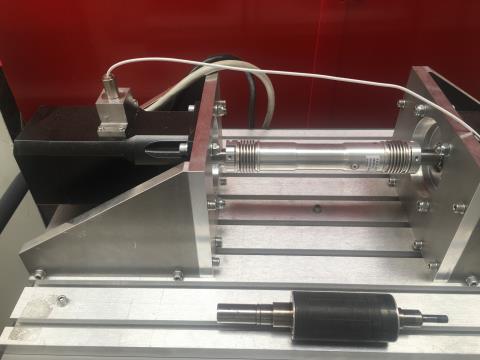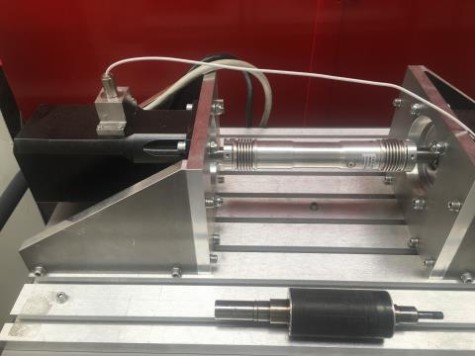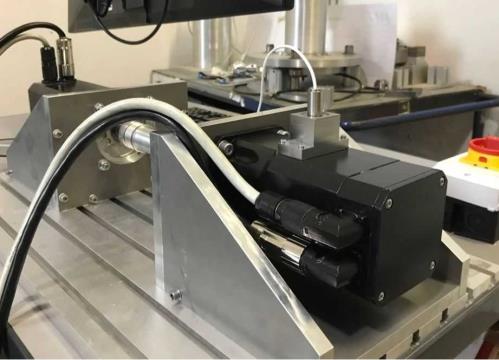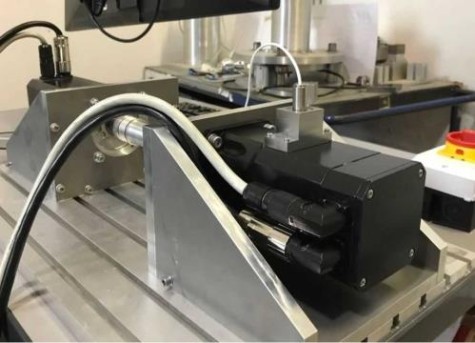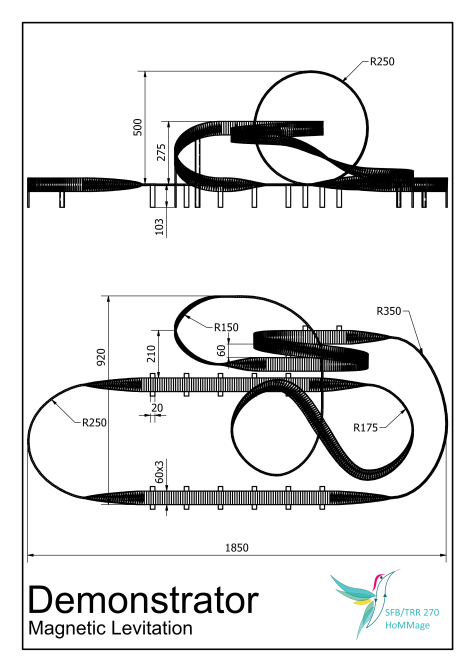Video Demonstrator 2022
What do our PhDs actually do during their study? The video demonstrator project aims to show it in short but understandable videos. For these videos, our PhDs worked with a professional film crew to get to the heart of their research during an interview.
Introduction by the speaker (opens in new tab)
Project videos:
A01 (opens in new tab) / A02 (opens in new tab) / A03 (opens in new tab) / A04 (opens in new tab) / A06 / A07 (opens in new tab) / A08 (opens in new tab) / A09 (opens in new tab) / A10 (opens in new tab) / A11 (opens in new tab)
B01 (opens in new tab) / B02 (opens in new tab) / B04 (opens in new tab) / B05 (opens in new tab) / B06 (opens in new tab) /B07 (opens in new tab)/ B08_1 (opens in new tab) / B08_2 (opens in new tab) / Z01 (opens in new tab)
Demonstrator 2021 – Maglev Train
The magnetic roller-coaster was built as a demonstrator project in the CRC 270 HoMMage. The magnetic track consists of over thousand strong Neodymium magnets. A type-II superconductor cooled below its critical temperature will be pinned in the magnetic flux and levitate above the track. This project is aimed at the general public, especially children and teenagers, and is shown during public events.
Demonstrator 2020 – Electric Motor
Permanent magnets are the key for efficient electric motors and generators, are essential for electromobility and wind turbines. 95% of all electric vehicles use rare earth magnet drive motors, permanent magnet quantities required worldwide will grow from 5,000 tonnes in 2019 to 40,000 – 70,000 tonnes per year by 2030.
The demonstrator was developed with the aim of testing different magnet alloys in the application of an electric motor. In particular, the effect of the installed magnets on the efficiency of the motor, depending on the motor and magnet temperature, is of interest here. For the realization of the demonstrator, requirements were found first, and the approaches were then evaluated based on a utility analysis. The motor test bench has a test motor with 1450W and a load motor with 2036W nominal power. Both motors are permanent magnet excited synchronous motors. To realize the exchangeability of the magnets, four identical test motors are provided, whose rotors can be equipped with alternative magnets. In addition, a fifth motor with water cooling is available to enable future integration of magnetocaloric cooling. In order to be able to take the demonstrator to conferences or similar events, the test stand was mounted on a table trolley. The torque is measured a sensor shaft that connects the shafts of the test motor and the load motor. The speed is detected by the motor resolvers and can be read out by the software of the frequency converters of the motors. To measure the motor temperature, a temperature sensor is mounted on the motor coil of the test motor. In addition, a pyrometer can be used to measure the magnet temperature without contact. Voltage and current sensors determine the electrical motor input power. All sensor data can be read directly on the test stand monitor. The efficiency of the motor is calculated using the data of electrical input power and mechanical output power, where the output power depends on speed and torque.
